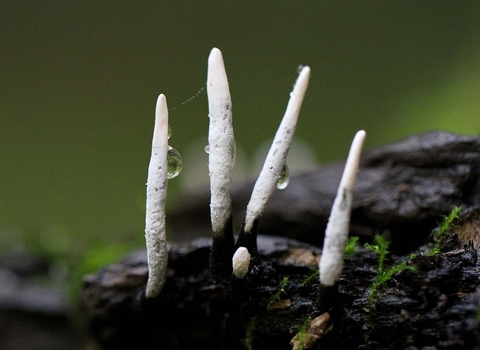
Candlesnuff Fungus ©Margaret Holland
Candlesnuff fungus
The candlesnuff fungus is very common. It has an erect, stick-like or forked fruiting body with a black base and white, powdery tip. It grows on dead and rotting wood.

Candlesnuff Fungus ©Margaret Holland